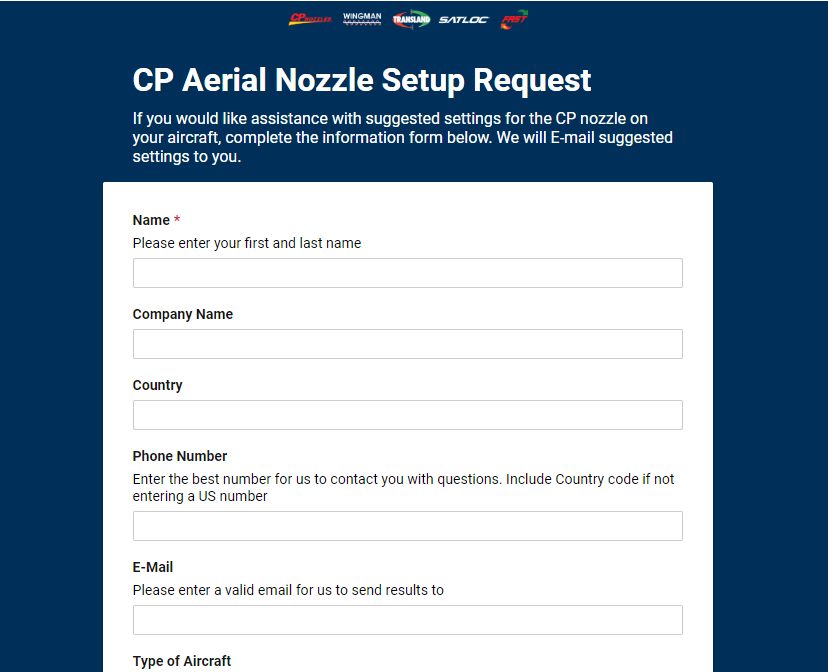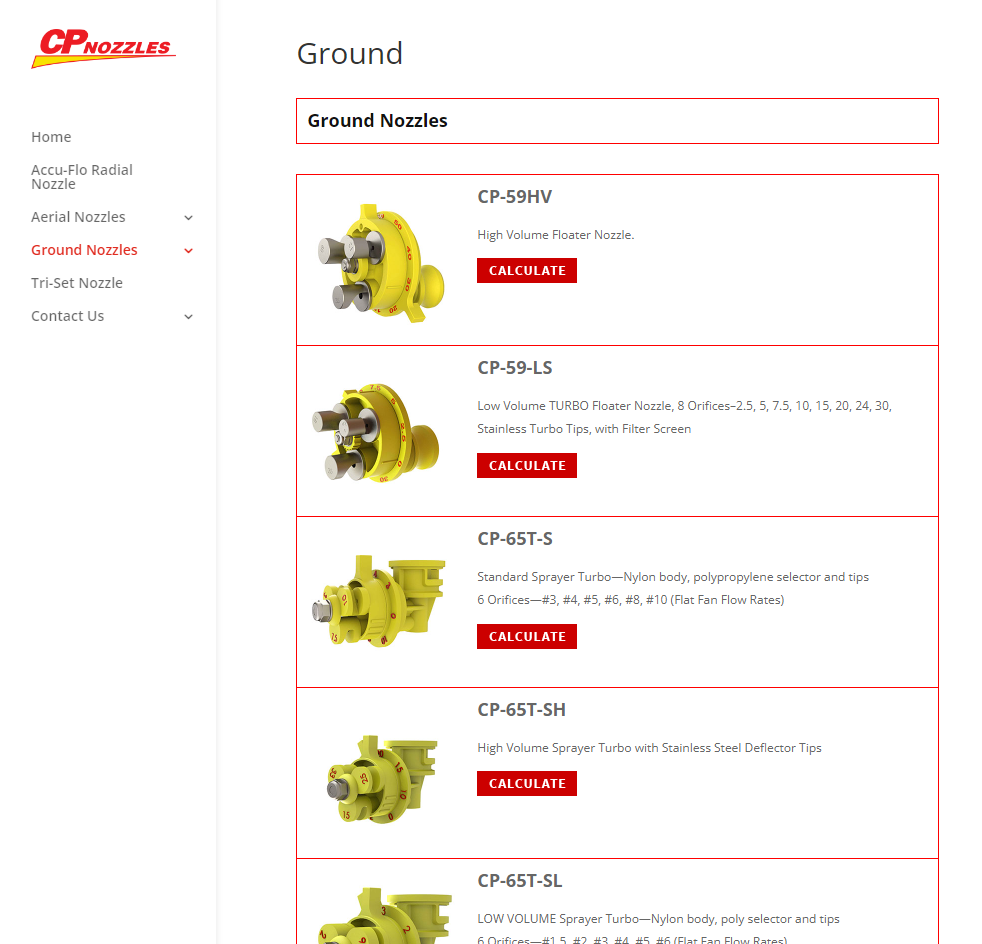Calculation Tools
Nozzle Selection Tools
CP Quick Calc will help determine which tips or orifices best suit application goals.
The Aerial section of the quick calc provides suggested settings with estimated pressures using your data. This gives a starting point that can be entered into the U.S.D.A. droplet models to provide an idea of the probable droplet spectrum. Pattern testing is the next step in verifying that your setup is performing as expected. Operation S.A.F.E. clinics offer Pattern Deposition Analysis to help guide and calibrate equipment to optimum performance. These clinics help you find optimal swath and droplet sizes. Also, the clinics help solve equipment problems before starting a new season.
If you would like assistance finding the suggested settings see the Aerial Nozzle Setup Request form and fill in all the required data to have results sent to you.
The Ground section of the quick calc will provide recommended orifice/tip combination for the selected nozzle with an estimated pressure and expected droplet classification with the setting.


If you would like assistance with suggested settings or comparisons of CP Nozzles, we are happy to help!
Fill out the information on this form, and we will send you the suggested settings for the data you provide.
Please click the “Submit” button once you have entered your information.
Narrow down the nozzle options using the CP Quick Calibration tool. This will filter all known settings and show a suggested Orifice/Tip size with an estimated pressure for use. All pressure settings that fall between 30-60psi will be shown.
CP Aerial Nozzles
A set of variables must be known to make a selection:
- Airspeed
- Swath
- GPA (Gallons Per Acre)
- Amount of Nozzles in use
*If working in Meters for swath and Liters per Hectare, conversions to Feet and Gallons per Acre will need to be done before using online tools.
USDA Droplet Models
Droplet spectrum, or spray quality, is integral to aerial application. Droplets that are too small may not reach the target and could drift. Droplets that are too large may not give adequate coverage. The USDA models are an excellent starting point for applicators to choose nozzles. All CP nozzles are tested at the USDA facility to gather this valuable information, and the data collected is put into the models.
Once an Orifice or Tip size has been determined, enter the information into the USDA-ARS Atomization models to view the droplet spectrum data.
Models are available in Low Speed and High Speed.
Narrow down the nozzle options using the CP Quick Calibration tool. This will filter all known settings and show a suggested Orifice/Tip size with an estimated pressure for use. All pressure settings that fall between 30-60psi will be shown.
CP Ground Nozzles
A set of variables must be known to make a selection;
- Ground Speed
- Spacing
- GPA (Gallons Per Acre)
If working in Meters for swath and Liters per Hectare, conversions to Feet and Gallons per Acre will need to be done before using online tools.



